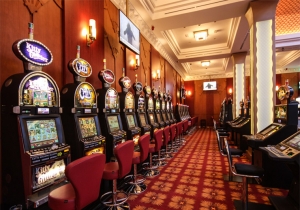
In a vibrant and exciting world of casinos, where fortune and strategy intertwine, color and design play a critical role in drawing in gamblers. From the moment visitors step into a casino or log into a gaming platform, they are immersed in a visual feast that captures their attention and entices them to discover more. Bright colors, captivating graphics, and innovative layouts are carefully crafted to create an atmosphere of thrill and expectation, ultimately improving the gaming experience.
As gamblers move through the ever-changing landscape of casino games, they come across a range of designs that not only serve aesthetic purposes but also affect emotions and decision-making. Colors like scarlet and yellow symbolize wealth and luck, while soothing blues and emeralds can create a more tranquil environment. Understanding how these elements work together enables casinos to create an inviting and energizing atmosphere that encourages players to engage with the games, invest additional time at the tables, and boost their overall enjoyment.
The Psychology of Hue in Casino Games
Tint plays a crucial role in the development of gambling games, shaping player emotions and responses. Lively and bold shades, such as red and amber, are often used to stimulate excitement and attract focus. These hues create a sense of urgency and vitality, encouraging players to participate more eagerly with the activity. By intentionally selecting tints, developers aim to evoke feelings of pleasure and excitement, which can enhance the complete player experience. non GamStop casino UK
Distinct shades also have psychological associations that can affect how gamblers perceive their chances of winning. For case, green is often associated with fortune and prosperity, making it a frequent choice in activities like the roulette wheel and poker games. This link can cause players to feel more hopeful and self-assured in their play, ultimately encouraging them to wager more. Grasping these associations allows game creators to create environments that enhance player satisfaction and loyalty.
Furthermore, the layout of gambling game interfaces often employs color gradients and opposing colors to direct players’ actions. For instance, successful results may be emphasized with striking, contrasting colors, creating a visual incentive. This technique reinforces successful results and encourages repeated participation. By exploiting the science of color, casinos can develop games that not only captivate participants but also maintain them interested and committed in their gaming experience.
Creative Features that Engage Gamers
The aesthetic appeal of gambling games is largely influenced by the use of vibrant colors. Bright and striking colors are strategically chosen to create an appealing atmosphere that grabs attention. For instance, crimson and golds often signify luck and wealth, which is why they are common in the color schemes of gaming machines and game surfaces. These colors not only draw players in, but they also evoke emotions associated with thrill and anticipation, enhancing the overall gaming experience.
In addition to color, the aesthetic and layout of gambling games play a crucial role in captivating players. Games are designed to be user-friendly, ensuring that players can easily understand the guidelines and mechanics. User-friendly interfaces, along with engaging graphics and motion, help maintain gamer interest and encourage extended play sessions. The physical elements, such as the feel of the buttons and the sounds of the games, also add to a comprehensive sensory experience that keeps players engaged.
Finally, thematic elements in gaming design can greatly influence player choice. Many gambling games are inspired by media, fairy tales, or exploration motifs, featuring symbols and characters that resonate with players. These themes create a sense of engagement and connection, making each game feel unique. When players feel a connection to the theme, they are more likely to choose that game over others, leading to higher participation and excitement within the gambling environment.
Case Studies: Notable Casino Game Designs
One prime example of successful casino game design is the acclaimed slot machine series themed around hit movies. Games such as those based on the Wizard of Oz and Game of thrones utilize vibrant colors and superior graphics to enthrall players in familiar narratives. The employment of dynamic visuals and entertaining sound effects grabs the attention of players, creating an psychological connection to the theme. This strategy not only promotes longer play but also enhances the overall gaming experience, resulting in increased player retention.
Another effective case is the use of the psychology of color in table games like 21 and the wheel. Casinos often develop these games with rich reds and greens, colors traditionally associated with luck and wealth. For instance, the green felt on a 21 table provides a soothing effect, while the red accents in the wheel invite anticipation. This deliberate use of color helps to foster an inviting atmosphere that motivates players to join in, fulfilling their psychological impulses and increasing their enjoyment.
Finally, online casino games that feature community features and lively, dynamic designs have achieved remarkable success in engaging players. Games like Zynga Poker and Slotomania leverage vivid colors and playful animations to create an inviting online environment. The addition of leaderboards, social sharing options, and in-app rewards promotes competition and community, drawing players in for longer sessions. Such designs not just make the games visually appealing but also underscore community engagement, a crucial factor in player retention and engagement within digital casino environments.